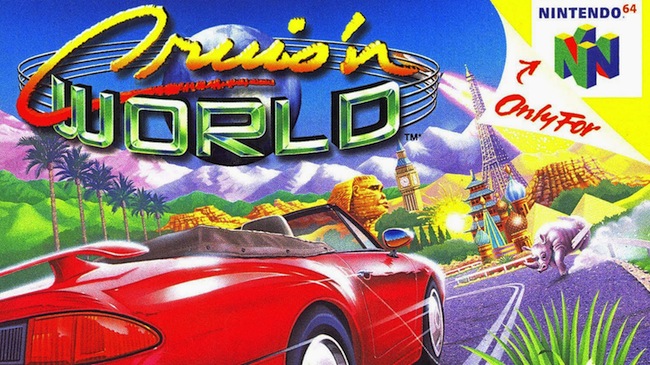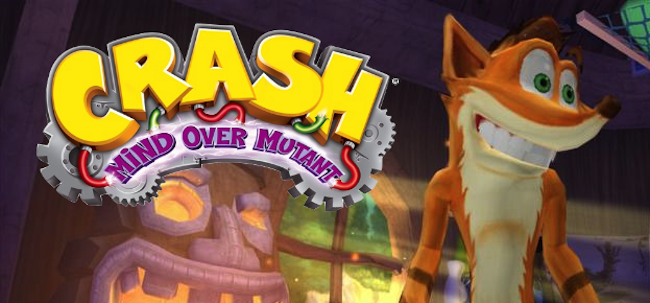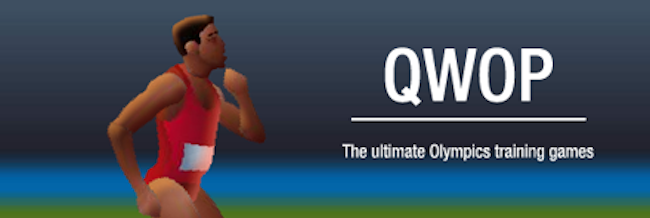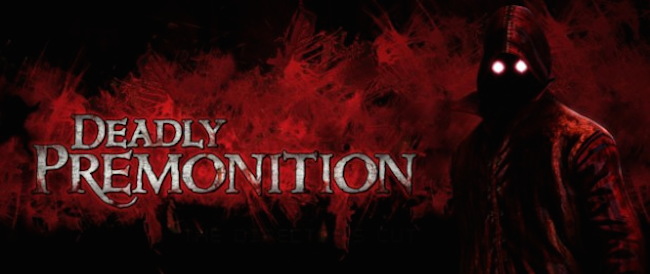One incredibly anomalous title in the vast ocean of gaming odysseys from the Far East has repeatedly stood out and slapped me in the face like an oiled up mankini-clad bodybuilder from space- That could be none other than the definitive (and unmistakably Japanese) Cho Aniki iteration which was released on the original PlayStation.
Admittedly, Cho Aniki on PlayStation was not the first game in the series, though it certainly took the already surreal (and incredibly homoerotic) themes in the series to an entirely new level. The game is a remake of sorts of the first Cho Aniki title from the PC-Engine, utilising the same base technology to create a side-scrolling shooter akin to other early to mid 90′s iconic titles like Super R-Type and Darius Twin. Additionally, instead of hand-drawn sprites, Masaya decided to go with digitally photographed people for its in game models. How did that go? I’m not sure how to answer this in words, so I’ll just leave you with this picture from the first boss battle: (click here)
Is that a giant man? In a flower garden in space? In some kind of robotic harness? With another man protruding from his, er… bits? It’s also worth noting that the boss theme for this battle is smooth cabaret jazz. Also, the full translated title of this game is “Super Big Brother – The Ultimate, Most Powerful Man in the Milky Way”. Hopefully that helped clear something up, though I’ve got no idea what. The funny thing is, that for all it’s insane digi-photo art and completely off-the-wall content, it’s actually kind of fun to play once you can get your head around it.
If you have any questions, the game’s intro video should give you all the answers (read: no answers whatsoever).

Star Wars: Masters of Teräs Käsi was a disappointment for both fans of the successful franchise and the fighting genre. At the time of release, critics were niggling at the uncooked fighting engine as characters didn’t manoeuvre very well, the roster appeared unbalanced, plus the moves and combos both looked slothful. However, Of all the flaws the major disappointment was the inaccurate nature of the lightsabers; players were dumbfounded as to why this once deadly weapon that could slice off limbs with ease was now reduced to mere whacking stick. Unfortunately for the game, it went on to be ranked as one of the worst Star Wars and fighting games of all time.
In my opinion, the game is a little underrated; understandably the graphics, gameplay and the storyline could have been better executed but to me it’s a marriage of the two great loves coming together to make an enjoyable game. The idea of Star Wars characters in a fighting realm had always been a dream of mine; once I was ready with controller in hand I was more than happy to overlook the flaws in the game. What won me over was the overall Star Wars experience, it was all there! The music and sound effects were all top-notch; the character models were accurately portrayed and all of the location stages were well designed and animated. What really stood out for me though was the multiplayer mode, the cast of characters all have diverse fighting styles and unique move sets which gave the game a lot of replay value. Of course, this game couldn’t compete with the titan of fighting games such as Tekken, Soul Blade or Virtua Fighter at the time, but I believe MoTK is a passable fighter that is more enjoyable to button-bash with friends, and fun to play as one of your favourite Star Wars characters.
Like most people, I never enjoyed wasting my time on terrible games. When I was growing up, I wasn’t allowed to game whenever I wanted to, so I tried to stick to games worth playing. There were very few exceptions: one was Snow Board Kids; terrible, boring and sickly sweet, but I couldn’t leave it alone! The one that takes the title of “best of the worst” has to be N64′s Cruisin’ World. Yes, they were so cool they didn’t need the ‘g’. Even back in the day, I knew it was not a game to brag to other gamers (the few kids with consoles) about, we never even owned it, but instead had the monopoly on hiring it from our local video store. Solo, it was glitchy and mind numbingly dull; bring in your younger sister, however, and it became an unpredictable, completely hilarious racing fiasco. We became so proficient at using the game the wrong way that we’d rampage over the globe tag-teaming to flip cars, cheat and create new ways to embarrass every other car on the road. I actually miss the pure enjoyment of a craptastic game that only friends and siblings could make worthwhile. It’s time to set up the 64 again, I think!
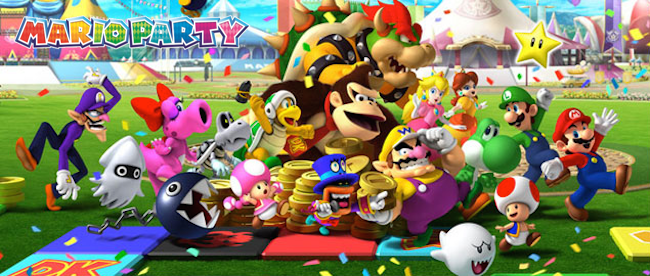
Anyone and everyone that’s ever played any iteration of the Mario Party party series will understand the pain that comes with it. To agonisingly earn over 30 coins, thumb bleeding over the plastic analog stick, skin peeling from the sweat rippling over your hands, eyes kept open by sheer adrenaline to see at least three on your next dice rol- wait, why is Boo stealing all of those coins? I earned those coins! Who the hell I- LUIGI. SATAN INCARNATE!
Mario Party isn’t so much a game as it is a test of endurance. It’s an impeccably designed and constructed series of games, and at times it’s some of the most fun you can have. Laughing with everyone as your friend loses it over a mini-game about bouncing up and down, it’s great, jubilant even. Then you become the friend. Suddenly you see the dark side of Mario Party, the party that was secretly being held by Illuminati republicans wheeling and dealing slaves across the Tasmanian border. Whatever dreams you harboured at the beginning of the night have been obliterated along with all of your coins. And, of course, you were one block away from buying a star too.
Mario Party is a grim reminder that no matter what you do, both in the game world and real life; every action you ultimately take is meaningless. You might have used a mushroom to roll three dice instead of one, but if you roll three ones, whoopdey frakkin’ daisy chaining titballs. The game breaks you mentally, it papercuts every piece of exposed flesh into tiny pieces, it’s a test of how many dice rolls you’re willing to put yourself through to convince yourself there’s still a light at the end of the blue and red tunnel. There’s no game outside though, just endless boinks and blops of despair. It’s horrible, and yet, in my opinion, it’s absolutely the best “worst” game ever made.

As a long-time video game nerd, I’ve played a lot of terrible games throughout my life, but occasionally I play a game so terrible, so incredibly broken, that it manages to go all the way around and become brilliant. My high school days were a haze of such games, as my friends and I, being cheap and poor, would latch on to the free-est, sh@$#iest PC games and mods we could get our hands on – especially those with a multiplayer component. However, there is one game, or rather, free Half-Life mod, that sits at the top of these sh$#%y games, and I can proudly claim that it is without a doubt, the best “worst” videogame I have ever played. That game is Ricochet.
Ricochet was actually released officially by Valve at the height of the Half-Life modding craze, and was very heavily inspired by the “disc battle” level of Disney’s Tron. It’s a multiplayer “shooter” in which players jump between a series of platforms suspended in space, throwing discs at other players in an attempt to knock them off their platforms and cause them to fall to their dooms. Unlike other shooters, where your K/D is everything, Ricochet awarded score on a “points” based system. You could “ricochet” your discs off bumpers on the map, and the more your disc ricocheted before killing an opponent, the more points you would get. You could also perform a special “decapitation” power attack, and there were power ups to pick up around the map, such as freeze or power discs.
There is no denying that Ricochet was a pretty terrible game, even at the time. It was horribly simplistic, full of bugs, and not actually very fun, but we loved it anyway. My friends and I spent many hours bouncing around those platforms, flinging discs at each other, and making many, many, disc-based puns. “You’re disc gusting!”
Most people will tell you that the Crash Bandicoot games ceased to be good when Naughty Dog sold the rights. As much as I love Naughty Dog, I can’t agree with this at all. In fact, although my favourite Crash game is ND’s Crash Team Racing, my favourite non-racing entry in the series is definitely Twinsanity, developed by Traveller’s Tales (who are now responsible for the LEGO games). Crash: Mind Over Mutant was the last game to be released in the series (outside of mobile games) and was hated by series fans just as all Crash games came to be. Mind Over Mutant was a direct sequel to Crash of The Titans, a Crash game that redesigned the characters and introduced a brand new gameplay concept. Instead of attention to platforming, Crash of The Titans was all about taking control of monsters and riding them through linear levels with brawler type gameplay. I didn’t like it either.
In Mind Over Mutant, though, they applied this concept to a much more fun and interesting game. The level select screen was replaced by an open world, much more attention was given to platforming and exploration, and as different as it was to the original games, it still felt like Crash Bandicoot. As much as people hated the new character designs, I found a liking for them, too. They were sleek, modern, and (for the most part – don’t even get me started on Coco) stayed true to the characters as they’ve always been. Mind Over Mutant was a good game, in my opinion, despite a generally negative reception. Though it strayed from the original formula in questionable ways, it still recreated the feeling of Crash Bandicoot in a game that was both modern and relevant at the time.
QWOP is an online flash game that appears simple and easy to grasp at first glance. You play a track athlete poised to start his run, and your inputs enable him to move. Sounds easy, right? Wrong. QWOP, with its deceptively innocent concept, is far more frustrating than it looks as you press the letters Q, W, O and P on your keyboard to control the character’s individual calves and thighs to make him move forward. The goal is to complete the 100-meter track, but it will take you a long while to just figure out how to get past the starting line.
However, despite all of this, QWOP can also be a hilarious and addicting game to play as you try to mash the keys in a combination that will make any sort of forward progress. Failures of doing so result in comical positions of the character, as you’re able to make him walk forward in an awkward manner or even do a backflip. The game even allows you to record negative metres if you manage to move backwards. It can be rage inducing, but the hilarity of the awkward movement, and the desire to get better makes you want to keep playing until you get it right, trying to beat your high score every time until you maybe (most likely never) reach the end of the track.
First released on the Xbox 360 in 2011, and again several years later on the PS3, with a Directors Cut, no less; Deadly Premonition was arguably one of the ugliest and most poorly designed games of the past generation. It looked absolutely terrible, and employed a control scheme so awkward and frustrating that it was almost beyond any sort of redemption. By all rights, it should have been an absolute disgrace. Well, at first glace, at least…
However, with all of that being said, this is actually one of my favourite games of all time. Yes, you read that statement correctly. Deadly Premonition is so bad, so cheesy, so awkward, that it does a full loop on itself to easily rival the most renown cult films out there. The protagonist, Francis “York” Morgan, is one of the most likable, seemingly schizophrenic, characters you will ever meet. Please, call him York, though, everyone does. York is a detective, who, along with his “imaginary” colleague, Zach, is in pursuit of a violent murderer known as the “Raincoat Killer.” It is a game filled with seemly random ideas, odd gameplay mechanics, and dialogue so strange that you can’t help but feel captivated by the ridiculous conversations; especially when spoken entirely in rhyme.
Once you have finished the game, for months, you will likely find yourself whistling it’s repetitively catchy tunes, quoting lines of dialogue that make no sense to anyone else, and on occasion, ending your sentences with an address to an “imaginary” colleague. “Right, Zach?” Deadly Premonition is a freak of nature, in as much that it’s success could never be replicated, and trying to “improve” anything about it would only damage the experience. There is just nothing else like it, but forewarned, it’s one of those games you have to play in order to appreciate.

Grezzo 2 was a pretty feral game by any moral standard; featuring racism, ultra-violence, religious prejudice, and some other stuff in Italian that I couldn’t quite understand. And poop. There is lots and lots of poop. Mostly, I played it for the shock value like so many others before me, and being fairly juvenile at times, I even found myself giggling at the humor. For the most part, though, the game is just a schizophrenic mess of directionless hate, morbid fascination becomes your overall motive to keep playing. So why on earth does this game qualify for my attention, let alone my praise? Because this game proves that “Evil Videogames” do exist, and this is basically it.
Grezzo 2, I doubt, was developed with any kind of higher purpose in mind; at best it’s a game with some questionable and discomforting things to say, and at worst it’s the visual rendering of a mad-man’s fever dream. This game isn’t just more violent than any triple-A title to be released, it does it in the name of some pretty hateful things. It does a terrible job, but it’s still there, it still exists. However, when angry parent and community groups claim that “violent” videogames are corrupting our youth, they aren’t talking about this game. They’ve looked over the entire industry and clearly found children less susceptible to Grezzo 2 than games such as CoD and GTA.
It’s almost as if they never even stooped to consider it, as though it were a game exclusively for adults and that children likely wouldn’t ever, and shouldn’t ever, play it until they reached the appropriate age. Surely anyone so loudly vocal on the issue of child-safety in videogames would have explored the full spectrum of gaming culture before passing judgement, meaning that Grezzo should be recognised for it’s efforts to bring controversial issues out in a respectable manner. Thank you, Grezzo 2, you’re a shining example to this wretched, evil industry!
Growing up, I played a lot of terrible games. My Atari 2600 was constantly loaded with multi-game carts filled with average to mediocre games (and some absolute gems), but I’d still play the hell out of them regardless. Some games were agonisingly frustrating, exceedingly obtuse and other times just plain awful. This trend continued onto my next console; the Super Nintendo. While my SNES gaming career started on a high with Starfox, my collection quickly devolved into the depths of mediocrity. The reason? Ignorance mostly, both mine and my parents. So that’s what this piece is dedicated to; not a particular gam, but to an entire childhood of gaming.
These days it’s hard to imagine committing serious time to an awful game, or even go so far as to buy one given how easy it is to find reviews and user experiences online. Cheap and easily accessible games means games libraries (digital at least) are heaving with choice, allowing gamers to switch between them as attention spans wane. Not so for this 90s kid, who lacked even the sacred Nintendo Power to guide me in the ways of gaming nirvana. Box art was my only guide and expense my barrier, so often I chose poorly. Claymates, Cool Spot and the notorious Shaq-fu (a sequel to which is currently being crowd-funded here) all befouled my SNES with not a single Mario game to be found! However, I played the hell out of those games. Constantly I tangled with lacklustre controls and design flaws all so I could play. Playing was fun regardless, and also if this was the only game you were getting for six months you damn well played it to hell. So this is to honour those games I played when I had nothing better to do, and subsequently, learn to appreciate the good ones! (Donkey Kong 2, I heart you forever!)


